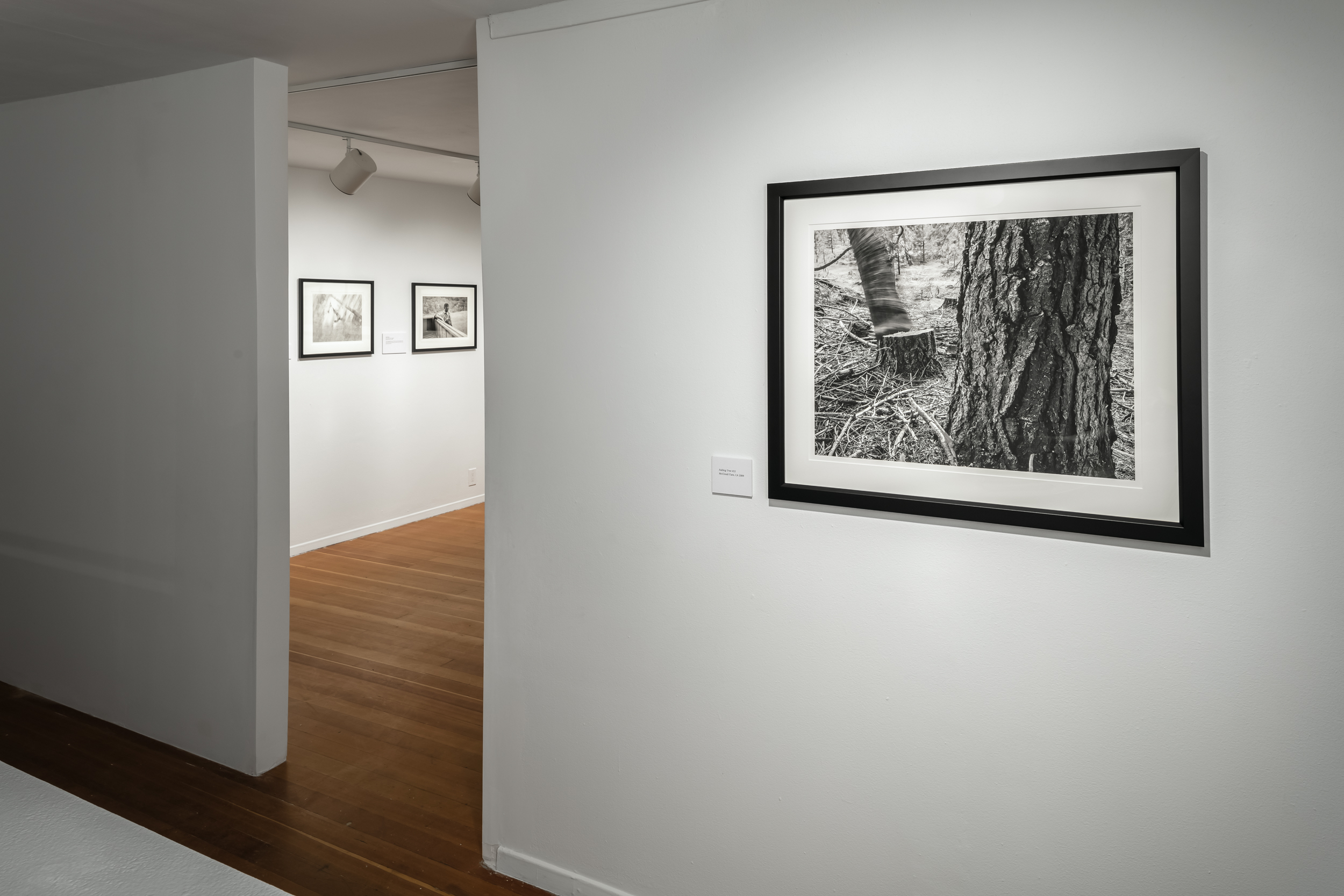Sap in Their Veins
“These portraits of loggers are deeply human and the Falling Tree images are unique in the history of photography.” — Roy Flukinger, Historian, Harry Ransom Center, UT Austin
“One of the things these logging images does so well, is complicate the easy binaries of good vs. bad, us vs. them.” -- Christine Hult-Lewis, Assistant Curator, The Bancroft Library, UC Berkeley
In the late 1980’s the Pacific Northwest was deeply divided in what was often referred to as the Spotted Owl Wars. Rural logging communities were fighting to protect their often multi-generational way of life. And urban environmentalists were fighting to stop logging of all old growth timber and the practice of clear cutting.
The divisions were deep, passionate and mostly unyielding.
Working with Dan Taylor, the curator of The Mendocino County Museum, our intent was to focus on the lunch bucket crew and leave out the politics of who decided how and how much to cut. Through personal portraiture and oral histories we hoped to help bridge some of the divide.
In 2004 I traveled through the same northern California regions again to make portraits, record stories and discover what had changed in that fifteen year period. An exhibition of the older and new work was scheduled to be exhibited together at the California State History Museum. Due to major shifts at the museum the exhibit never happened until now.
This exhibit is relevant today because we are again living in a time of deep divisions, and I believe in the power of stories that reflect our shared humanity to help bridge those divides.
“Wow. What an incredible show. I have never felt empathy for a logger before. The description of sounds and sensation while felling a tree and then seeing the photographs... spectacular, amazing.” -- J.M., Exhibition Visitor
Touring Exhibition Prospectus208.301.5092
Link to condensed version PDF / Link to full version PDF
Exhibition Availability and Management
Moscow Contemporary / Roger Rowley / 208-301-5092









